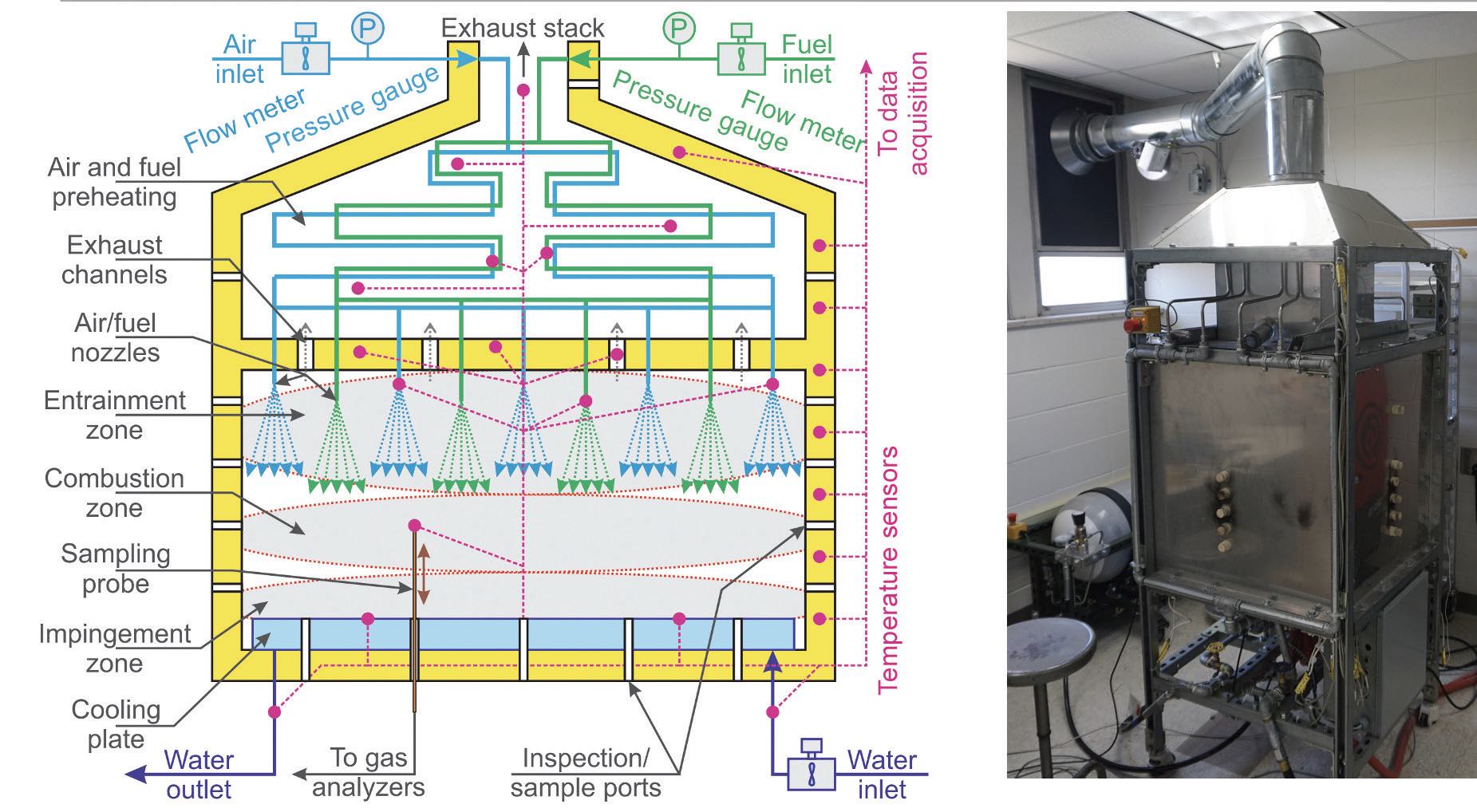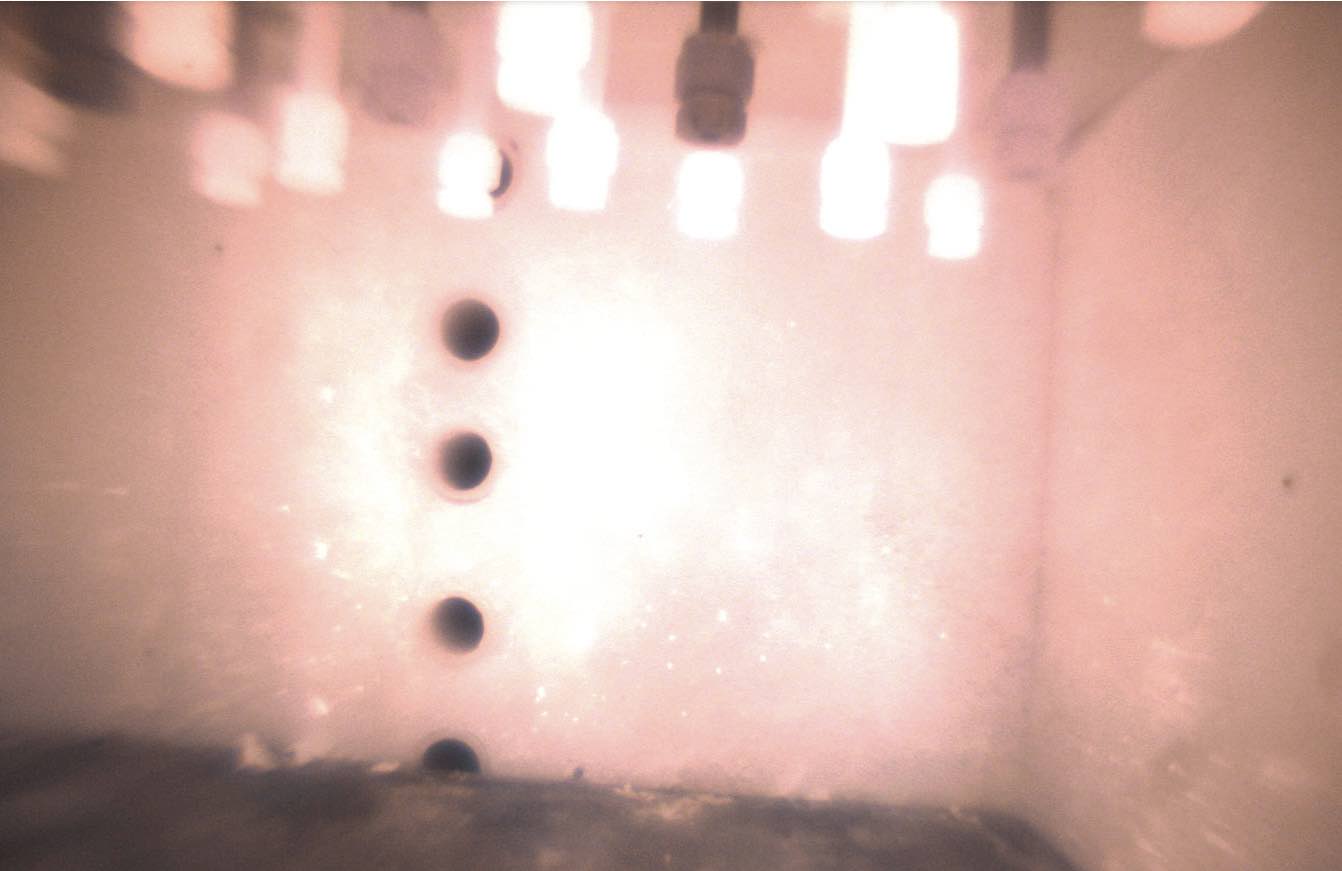HIGHLIGHTS
•
A new design for heating a gas oven without a flame uses the synergy of impingement effect and a flameless combustion to greatly improve efficiency and reduce NO
x emissions.
•
Air and fuel jets from alternating nozzles produce thorough mixing leading to almost complete combustion.
•
Temperatures in the oven can reach as high as 1,000 C.
Industrial gas ovens perform an important function in such applications as drying, curing and baking of parts and components. Metal parts can be placed in an oven, which is heated to an elevated temperature to improve mechanical properties through heat treatment, annealed through a slowly cooling process to relieve stress or undergoing stress relief below the critical temperature to minimize changes in crystal structure and distortion.
In the case of heat treatment, lubricants known as quenching fluids are used to ensure that a heated metal part is cooled in a systematic fashion to ensure that the desired mechanical properties are produced, and dimensional integrity is maintained. A previous TLT article
1 discussed the use of ice to more effectively facilitate heat transfer through the Leidenfrost effect. The researchers believe that ice has the potential to further improve the heat treatment of metals by better controlling the quenching process.
The most commonly used industrial ovens utilize a mixture of gas and air to produce a flame. This results in a combustion process that produces a flame front, which directly or indirectly heats the air within the volume of the oven. Dr. Pawel Olszewski, associate professor of mechanical engineering in the department of engineering and engineering technology at the University of Wisconsin Oshkosh in Oshkosh, Wisc., says, “The problem with heat produced through flame generation is the formation of combustion products such as NO
x.”
Heating an industrial oven without the use of a flame has been under study for some time. Olszewski says, “This approach, known as flameless combustion, was originally developed and patented in 1992. Flameless combustion provides a much more even distribution of combustion throughout the oven minimizing temperature spikes and the formation of NO
x. But the method is inefficient due to the use of indirect heat transfer pathway. Convective heating of the oven walls is required to produce substantial radiative heating. This consumes an extensive amount of energy and can promote heat loss. The refractory lining, which is needed as a safety or backup layer in the oven, also can degrade at the same time.”
Olszewski has been working with flameless ovens for some time. His initial experience was with his former advisor, emeritus professor Arvind Atreya in the mechanical engineering department at the University of Michigan in Ann Arbor, Mich. Olszewski has now developed a new type of flameless industrial gas oven that overcomes the efficiency issues while also minimizing the formation of combustion byproducts such as NO
x.
Impingement
A new flameless industrial gas oven design has been developed by Olszewski that uses the synergy of impingement effect and a flameless combustion to greatly improve efficiency and reduce NO
x emissions. Olszewski says, “The key to this approach is the placement of alternating injection nozzles of air and fuel as shown in the left image of Figure 4. Air and fuel jets originate from these nozzles and are directed toward the surfaces of the oven.”
The two combustion raw materials will literally impinge upon each other interacting at a rate that approaches the speed of sound. Olszewski says, “This effect, which is comparable to a huge tornado, leads to a thorough mixing of air and fuel producing almost complete combustion with evidence of few byproducts. In contrast, air and the fuel are mixed in conventional flame producing ovens prior to combustion.”
The thorough mixing occurs as both the air and fuel enter the entrainment zone
(see Figure 4). Combustion then occurs with the generation of heat in the impingement zone on the oven surface. The combustion reaction is occurring in all areas of the oven producing a uniform heating effect. The right image in Figure 4 shows a photograph of the flameless industrial gas oven using this impingement technique.
 Figure 4. A schematic of the flameless oven is shown in the left image and a picture of the oven in the right image. Figure courtesy of the University of Wisconsin Oshkosh.
Figure 4. A schematic of the flameless oven is shown in the left image and a picture of the oven in the right image. Figure courtesy of the University of Wisconsin Oshkosh.
Temperatures in the oven can reach as high as 1,000 C according to Olszewski. He says, “Another benefit is that a user can see the flameless industrial gas oven in use because there is no flame to obscure the view
(see Figure 5). The bright figures shown are those of metal specimens placed in the flameless industrial gas oven.”
 Figure 5. Without the presence of a flame, a user can clearly see into the oven. Figure courtesy of the University of Wisconsin Oshkosh.
Figure 5. Without the presence of a flame, a user can clearly see into the oven. Figure courtesy of the University of Wisconsin Oshkosh.
Initial experiments were conducted using natural gas as the fuel. Olszewski indicates that other fuels that can be used include biogas, propane and butane. He says, “Conventional flame generating industrial ovens can be readily retrofitted to this flameless impingement design without any difficulty.”
Potential benefits for the flameless industrial gas oven are an increase in productivity due to the more intense heat transfer generated by the impingement mechanism, a potential reduction in the use of fuel due to the higher oven efficiency and reduction of oven emissions making for a safer work environment. Melting of metal alloys, use in the preparation of glass products, power generation and crude oil processing are potential applications for this oven.
Further details on this technology can be found in a recently granted U.S. patent
2 or by contacting Olszewski at
olszewskip@uwosh.edu.
REFERENCES
1.
Canter, N. (2022), “Ice: A more effective heat transfer agent,” TLT,
78 (5), pp. 22-23. Available
here.
2.
Olszewski, P. (2023), “Flameless impingement oven,” U.S. Patent 11,585,601 B2.